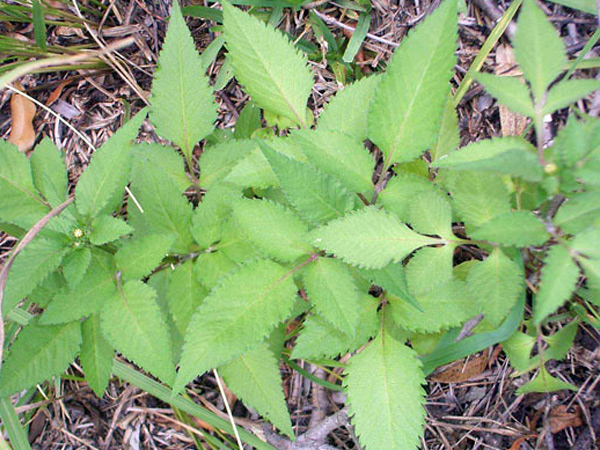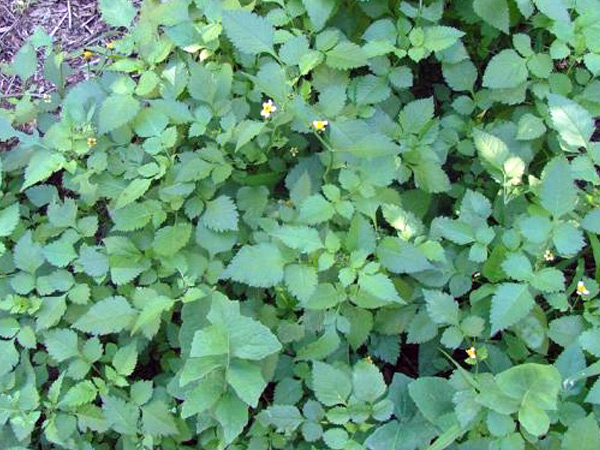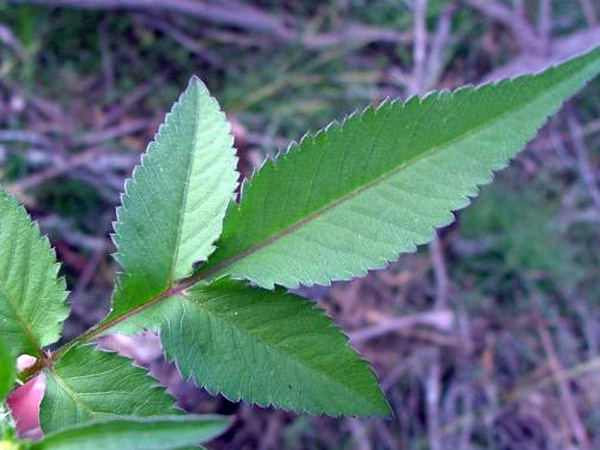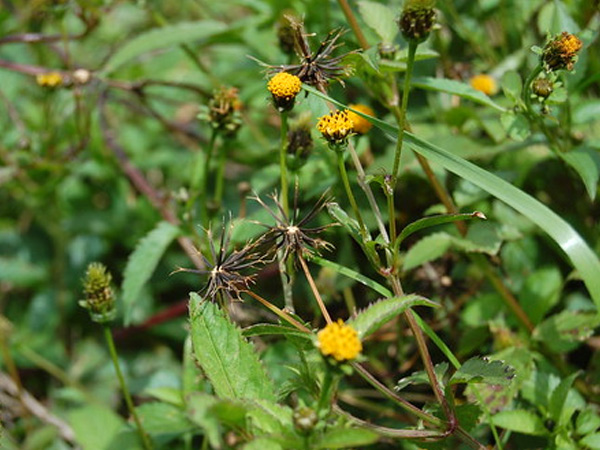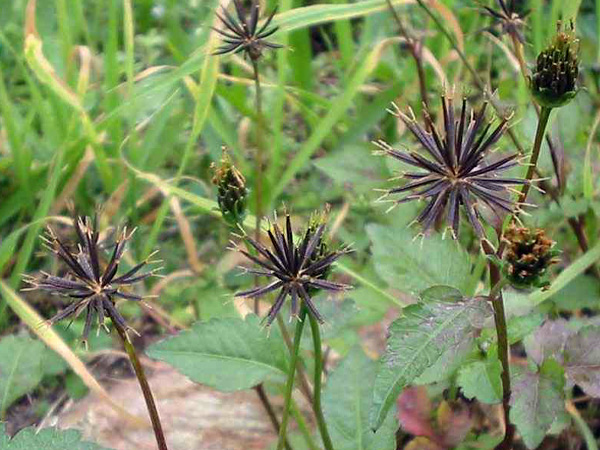Weeds
Cobblers peg – Bidens pilosa
This common weed grows in a wide variety of habitats. Cobbler’s pegs (Bidens pilosa) is well known as a weed of gardens, parks, crops, pastures, roadsides, disturbed sites and waste areas, but it also invades waterways, rainforest margins, open woodlands and coastal sites (particularly in warmer regions). For this reason it is also regarded as an environmental weed in New South Wales, Queensland, Western Australia and the ACT.
Cobbler’s pegs (Bidens pilosa) was recently listed as a priority environmental weed in two Natural Resource Management regions and in south-eastern Queensland it is considered to be among the top 200 most invasive plant species. This species is readily dispersed by man’s activities and dense populations can out-compete native species on the exposed margins of bushland and in revegetation sites.
Profile
Family
Asteraceae (Queensland, New South Wales, the ACT, Victoria, Tasmania, Western Australia and the Northern Territory)
Compositae (South Australia)
Common Names
beggar’s tick, beggar’s ticks, black jack, bur, bur marigold, butterfly needles, cobbler’s peg, cobbler’s pegs, cobbler’s-pegs, common beggar-ticks, common blackjack, farmer’s friend, hairy beggarticks, hairy beggar-ticks, needleandthread, pitch forks, pitchforks, shepherd’s needles, Spanish needle, Spanish needles, stick tights, stickybeak, white beggarticks
Origin
This species is now very widespread throughout the warmer regions of the world, but is thought to have originated in tropical America (i.e. in Mexico, Belize, Costa Rica, El Salvador, Guatemala, Honduras, Nicaragua, Panama, the Caribbean, French Guiana, Guyana, Surinam, Venezuela, Brazil, Bolivia, Colombia, Ecuador, Peru, Argentina, Chile and Uruguay).
Naturalised Distribution
A widely naturalised species that is particularly common in the eastern and northern parts of Australia. It is widely naturalised throughout Queensland, eastern New South Wales, the Northern Territory and the northern parts of Western Australia. Less common in the ACT, in some parts of Victoria and South Australia, and in south-western Australia. Also naturalised on Lord Howe Island, Norfolk Island and Christmas Island, and in many other parts of the world.
Control
Weed lifting
Perennials (plants that germinate and seed through many years) should have their major root structures lifted out entirely to prevent re-shooting.
Using a shovel, weeding fork, mattock or garden fork, loosen the dirt surrounding the plant’s roots or underground structures (bulbs, corns, tubers, rhizomes, etc).
Carefully pry the plant out of the ground using the tool as a lever to help lift the whole plant out of the ground.
Weed chipping
Annual species (plants that germinate and seed within 12 months) can be chipped using a chipping hoe to sever the stem from the roots below the crown of the plant. Ensure that this takes place before the production of flowers, fruit and seed.
Plant disposal
Be sure to remove all of the root structure including any corms, tubers, bulbs or rhizomes.
Remove any dirt from the plant’s root structures.
All plant material should be hung up or left to dry on a raft made of twigs, as leaving plants on the ground can lead to them re-shooting.
Place the weeds in your green waste bin or a garbage bag and then dump in the general waste bin. Do not put them in the compost as the vegetative material can remain viable and you could end up spreading the weeds in your garden.
